The field of human evolution is fascinating. New finds are changing our knowledge each year as more and more incredible discoveries are made. The 21st century has really opened our eyes to how wonderful and diverse our ancient relatives were. Ancient cave art in Indonesia, Neanderthal art, and new fossils pushing back the date of the origin of our own species. As well as these amazing insights to how our relatives lived, several new species have been discovered too! It really is an exciting time for palaeoanthropology.
I am regularly reminded of how much we are discovering about our own evolution and that of our relatives as my thumb scrolls through my phone on Twitter. I see some amazing facts. Old historical discoveries. New exciting discoveries. And one of my favourite Twitter science people is Dr Paige Madison. Every day she tweets about the history of science, the curious characters, and anthropology amazingness. And every day I learn something new. The 21st century is showing that our past is more complicated that we thought. Groups from one species travelled out of Africa, often at different times. New tools, new art, are shining a light on how some of ancestors lived. There is no simple narrative to our own evolutionary history.
One of the most astounding discoveries this century, well the most astonishing in the whole history of palaeoanthropology, is the discovery of a very small species of human on the Island of Flores: Homo floresiensis. And it was a very small species. Reaching just over a meter tall, these were real hobbits. Our ancient relatives, the Australopithecines, were small (the famous skeleton of Lucy was about the same size). But over time hominins have grown taller, and that’s what makes this species such a curious find: it wasn’t a species from 3 million years ago, it was around until fairly recently. I’ve been itching to write about this little hominin for a long time, so I contacted Paige. Having recently finished her PhD in historical anthropology examining the history of Neanderthals, Australopithecines, and the hobbit, she was the perfect person to talk to about these little humans. She has studied the history of their discovery. Spent months working at the site. She has lived these enigmatic humans for over three years.
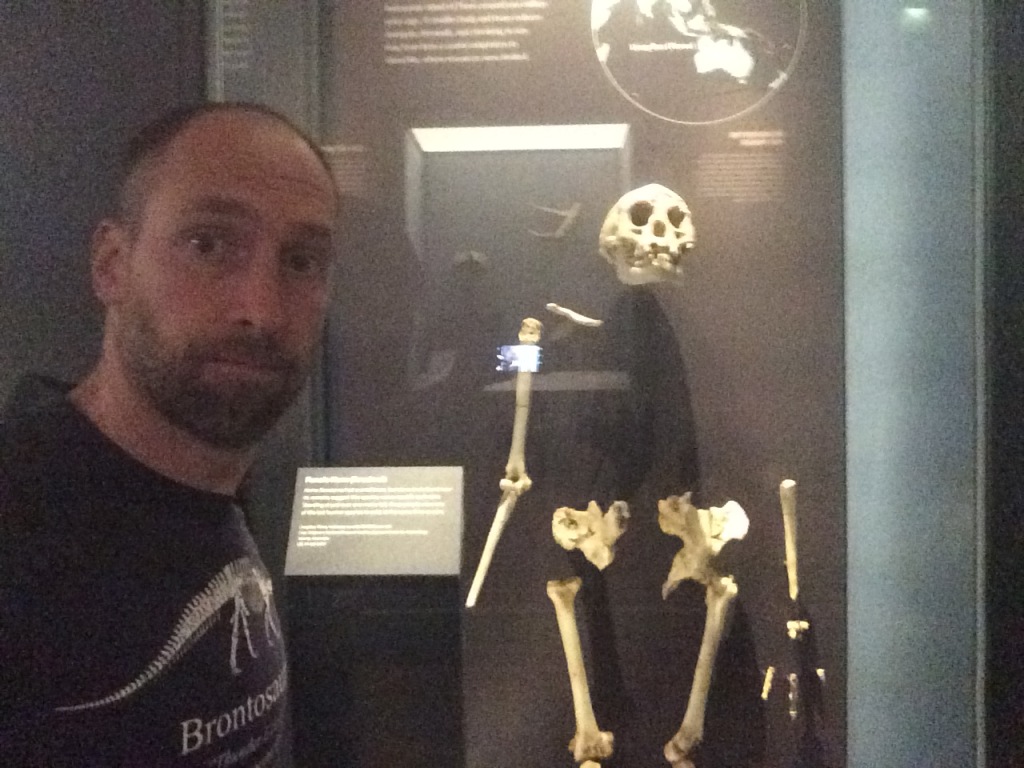
The first fossils of H. floresiensis were excavated in 2003. “This was such a huge discovery,” Paige says from her desk as we talk through our laptops. Behind her, a cast of the skull of H. floresiensis sits. “The findings were published in 2004. The scientists didn’t expect such a huge response from the media. Phones were ringing every day.” The world went crazy wild for this new find. A new human species that was only a little over a meter tall. These were fossils of adults, not juveniles. It wasn’t long before it was nicknamed the hobbit. “It’s quite funny really. The team nicknamed it the hobbit before it was published, and even joked about naming the new species Homo hobbitus!”
I wanted to know more about this mysterious species.
Fossils were found in the cave of Liang Bua Cave on the Indonesian Island of Flores. “It’s beautiful.” Paige tells me, reminiscing. She has spent many weeks working in the cave. “It is quite high up, about 500 meters above sea level. When you are inside it’s cool. So perfectly cool, it should be the marker for how offices should set their temperatures. The closest translation for Liang Bua is probably ‘cool cave’. Because it is so cool, people can work in there easily in just a T-shirt or a light jacket. There are currently four pits that are being excavated, each 3 meters by 3 meters. And we have 45 people excavating.”
I try to visualise it. Liang Bua is a very large cave, and the excavation is meticulous. It’s tempting to just go in and dig. But archaeology requires a lot of patience. A grid is chosen, and then, slowly each layer is excavated. Everything is recorded as the archaeologists work. “One visitor said to me ‘that looks terribly boring’ as they watched people excavating!” Paige joked as we talked about the excavation. The Wae Racang River is close by, and this probably gave the cave the really nice layers that they have found: each time it flooded, sediment was gently pushed into the cave, building up over time. “The layers in the cave are really clear. The only trouble is, there are interesting things in the top layers, which are younger, so we have to be so patient to get to the older layers below where H. floresiensis is found, which we call the hobbit layers. With the sediment around 20 meters thick, it takes a long time to reach the oldest layers at the bottom. There is very likely decades more research in this one site alone. We are training locals how to excavate and record and study the finds, so that the fossils in their country can be studied by the next generation of Indonesian scientists.”
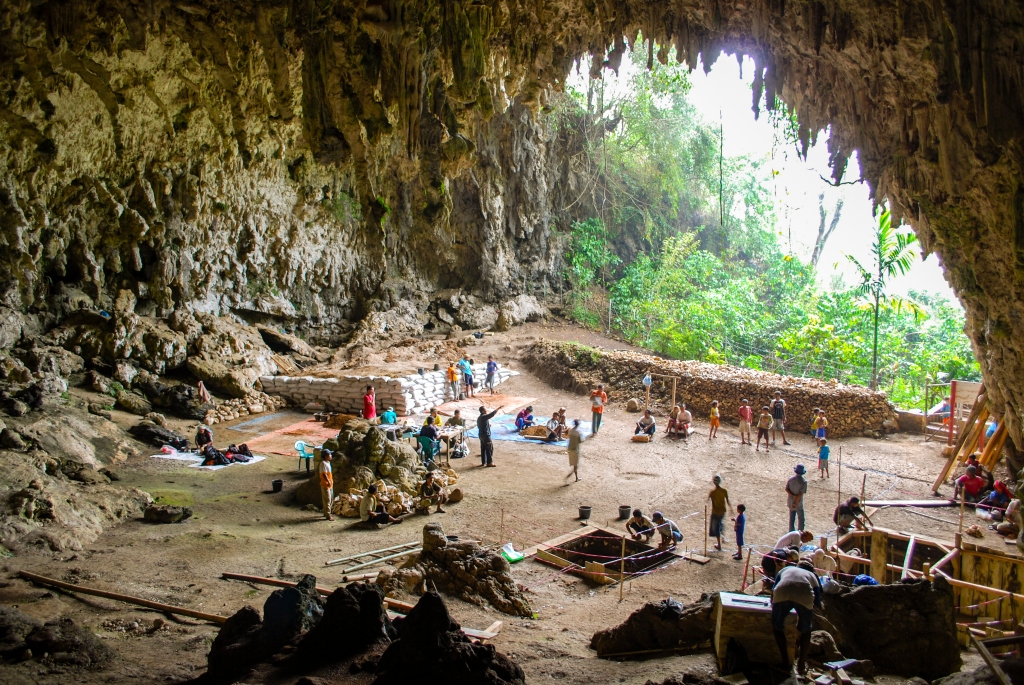
Working in a museum, I am well aware of Europeans taking fossils, and animals and plants, for their own research in the past, so I was really happy to hear the collaborative work the team at Liang Bua are doing. Paige could sense this. “This isn’t actually new. Many of the local excavators have been there a long time. Some for decades. The research itself has long been led by Indonesians, just partnered with foreign scientists because they are able to bring in the funding. Thomas Sutikna is a great example, he has been directing the excavations since the early 2000s and is himself the 2nd generation of Indonesian archaeologists to do so (his advisor, Raden Pandji Soejono was the first, emerging as an archaeologist after Indonesia won its independence in 1949). Sutikna is really leading the charge of training the next generation of Indonesian scientists, along with Matt Tocheri who has two Indonesian archaeologists completing masters degrees at his university in Canada right now.” All too often we assume that the people behind the research are European or American. It’s so important to know everyone involved in the science behind these discoveries.
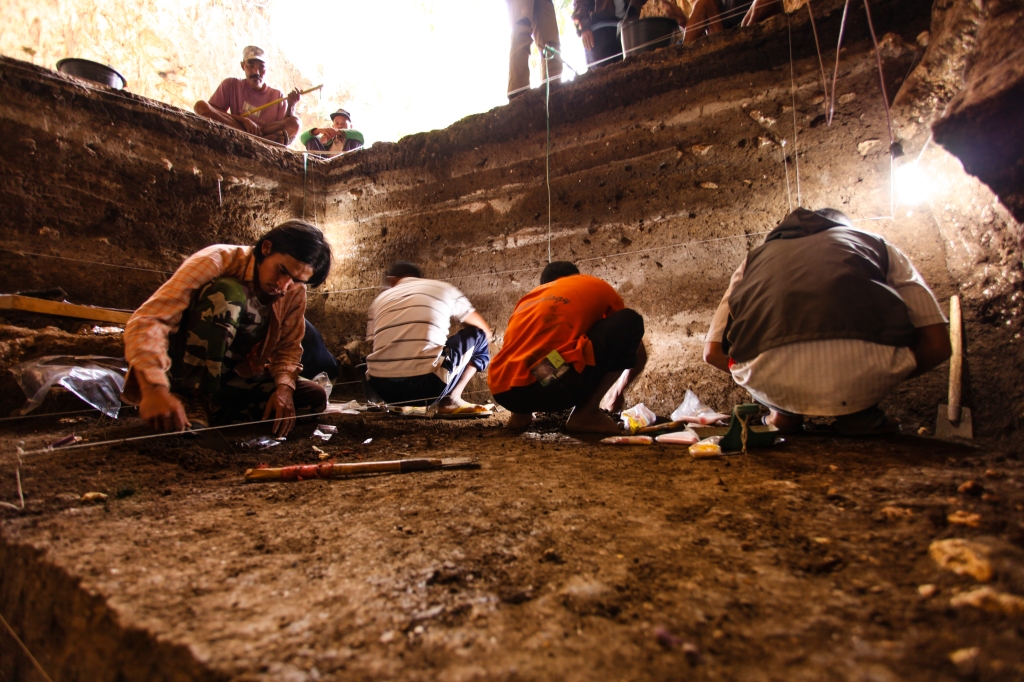
There have been relatively few fossils of H. floresiensis found so far: a very well-preserved skull, a jawbone, and fragmentary bones of the skeleton. All in all we have the fossils of just seven individuals from this species. I assumed that this unique little human evolved from Homo erectus, a human ancestor who was one of the first species to travel outside Africa. H. erectus was incredible successful, living from around 2 million years ago until just 100,000 years ago. It was a widespread species too, and fossils have been found across Europe and Asia. And H. erectus even made it to some islands. If they got to Flores, that population could have evolved into a smaller size. We have seen this before with dwarf mammoths, and dwarf hippos: large species evolve to be smaller on islands, as an adaptation to less food supplies.
I talk a little too quickly about dwarf mammoths. Paige patiently lets me finish, and with a mischievous smile, she says that’s one theory. She picks up her cast of the skull behind her. “The skull of the little floresiensis does share similarities to erectus. When I first saw the skull, I noticed how thick the bone was, just like erectus. It is possible that it was the ancestor. But there is another theory. The skull does share traits from erectus, but the skeleton doesn’t look anything like it. Bones do change when animals are reduced in size, but the skeleton of floresiensis shows too many changes. Too many to make sense that erectus was the ancestor. There are suggestions that the ancestor may from an Australopithecus species.” I nearly spit out my tea. There were several species of Australopithecus, very early relatives to us, dating from around 4 million years ago to around 1.6 million years ago. And no fossils of any Australopithecus species have been found outside of Africa. If this theory is right, that is big. Really big. After listening to me getting too excited, she tantalisingly adds, “If an Australopithecus, or a very early Homo, species was the ancestor, these were already small hominins, so they wouldn’t have shrunk in size. It is possible. It’s just that we haven’t found them yet on the mainland of Asia. Yet.”
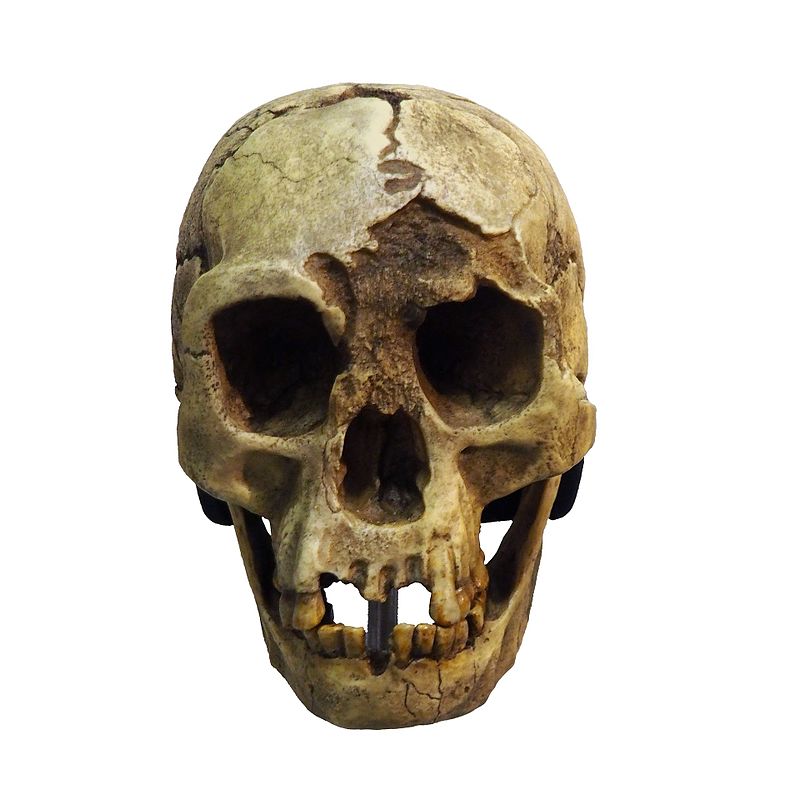
The site is incredible, and the painstaking work to excavate everything so meticulously is remarkable. Excavations have also found lots of stone tools in the deepest layers (the hobbit layers), so it looks like the hobbit was here for quite a while. “It’s quite amazing,” she talks with excitement, her hands waving, “we have stone tools at the deepest levels, and all the way up until when they disappear. It looks like Liang Bua was a regular camp site for this human.” Even though I am sitting in my little home office in England, and Paige is in hers in Denmark, I can see the passion as she speaks. “The oldest layers are about 200,000 years old, and until 100,000 years ago we find just stone tools, no fossils of floresiensis. Then we find fossils from about 100,000 years ago until around 46,000 years ago. That’s when they vanish from this site. And in the layers above we find evidence of our species, Homo sapiens. Interestingly there is no evidence of fire in the deeper layers relating to the hobbit, but there is evidence of fire in the layers where we find H. sapiens.”
The animals living alongside H. floresiensis add to the mystery of this island in the past. Komodo dragons lived here, and still do, although they have now moved to more coastal areas. There were stranger things too, more fitting for a fantasy film than reality. Giant storks, over two meters tall, giant vultures, giant rats the size of a cat, and pygmy elephants. Evolution on Flores was its own unique laboratory. And the world these hobbits lived in was unlike anything today. “There were a lot of rat bones, making up about 78% of the fossils found, and included giant rats. That’s a big percentage. This is really good for us because we can work out the environment with the fossils. The rats from the older layers near the bottom show a more open environment with less forest. Then around 46,000 years ago we see just two species instead of several, and these two species are more at home in a forest environment, similar to what Flores is like today.”
Something happened 46,000 years ago. No H. floresiensis have been found after that time. All the mega-fauna, apart from the Komodo dragons, disappear as well. And the rat species change too. And then above this date, we see our species in the cave. Coincidence? Perhaps it is. “It’s not always as clear as we would like. Around 46,000 years ago we find a layer of ash. It’s really thick, showing that there was a very big volcanic eruption and it must have been close by. Then above the ash layer we find no hobbits and find our species instead. But this doesn’t mean the hobbits went extinct at that time. Like the Komodo dragon, they could have just moved somewhere else.” The timing of extinction is always contentious. Just because we don’t find fossils of a species above a certain point, doesn’t mean that is when they became extinct. Chatting about the fossil record and lack of fossils, Paige smiles. “At the moment Liang Bua is the only site on Flores with fossils of floresiensis. We are looking at other places where there could potentially be fossils. And these could tell us so much more about this species. It is an incredible species, and we have only scraped the surface.”
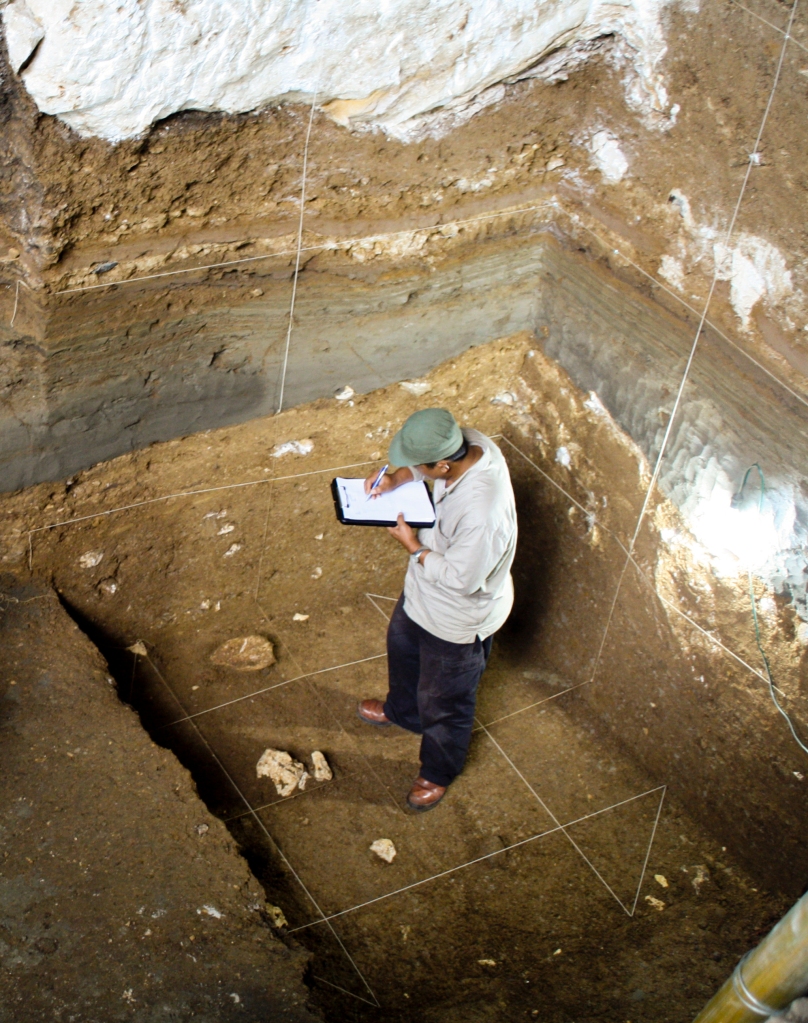
There’s a twist in the tale. In 2007, some fossils were found in Callao Cave in Luzon, in the Philippines. Originally described as belonging to modern humans, more fossils were found, showing another diminutive hominin. The fossils of this new species, Homo luzonensis, date to around 50,000 years ago, and evidence in the cave suggests they may have been there as early as 770,000 years ago. “For an early human species to cross the seas around Indonesia would have been very difficult. The currents are so strong. It might be that luzonensis offers some new clues as to how the hobbits got to Flores. There are a lot of islands in the area, and at the minute not a lot of exploring for fossil sites. This is a really exciting time for us and luzonensis could offer hints at ancient routes.”
Homo floresiensis is an incredible discovery. It shows us that our family tree is a lot more bushy than we originally thought. It also sparks our imagination. These tiny humans living on a mysterious island, along side giant killer predators. Not only that, but it shows how our own species has an incredibly diverse history. There is so much still to learn about this enigmatic human. How they got here. Who did it evolve from. We know from Liang Bua that they lived on Flores from at least 200,000 to 46,000 years ago. But did they get here earlier than that? Did they survive longer than that? Were they spread across the entire island? There is a myth on the Island of small people living in the forest, the ebu gogo. Fascinatingly this myth comes from a different region, over 100km away. Future excavations could show that the hobbit lived across Flores and even overlapped with our own species. Today, palaeoanthropology is revealing fascinating insights into our ancient relatives, and our own species. Tomorrow, who knows what discoveries we will see.
Written by Jan Freedman (Twitter @JanFreedman)
A very special thank you to Paige Madison for spending the time to talk to me for this blog post, and sharing her passion for Homo floresiensis. If you don’t already, follow Paige on Twitter (@FossilHistory)
Further reading:
For a nice read about the myth of the ebu gogo on Flores: The myth of the ebu gogo.
There is nice background to the hobbit here: The hobbit at 15.
Read more about those giant rats: Hobbit humans story gets a twist from thousands of rat bones.
Paige wrote about her time she spend in Liang Bua at night: Nightfall in the hobbit cave.
Argue, D., & Groves, P. 2017. The affinities of Homo floresiensis based on phylogenetic analysis of cranial, dental and postcranial characters. Journal of Human Evolution. 107. pp.107-133. [Abstract only]
Argue, D., et al. 2009. Homo floresiensis: A cladistic analysis. Journal of Human Evolution. 5. pp.623-639. [Abstract only]
Brown, P., et al. 2004. A new small-bodied hominin from the Late Pleistocene of Flores, Indonesia. Nature. 431 (7012). pp.105-1061. [Abstract only]
Brumm, A., et al. 2010. Hominins on Flores, Indonesia, by one million years ago. Nature. 464 (7289). pp.748-752. [Abstract only]
Culottta, E. 2005. Palaeonantrhopolgy – new hobbits bolster species, but origins still a mystery. Science. 310. pp. 208-209. [Abstract only]
Détroit, F., et al. 2019. A new species of Homo from the Late Pleistocene of the Philippines. Nature. 568. pp.181-186. [Abstract only]
Ingicco, T., et al. 2018. Earliest known hominin activity in the Philippines by 709 thousand years ago. Nature. 557 (7704). pp.233-237. [Full article]
Jungers, W. L., et al. 2009. The foot of Homo floresiensis. Nature. 459 (7243). pp.81-84. [Abstract only]
Mijares, A. S., et al. 2010. New evidence for a 67,000 year old human presence at Callao Cave, Luzon, Philippines. Journal of Human Evolution. 59 (1). pp.123-132. [Abstract only]
Moorwood, M. J., et al. 2004. Archaeology and age of a new hominin from Flores in eastern Indonesia. Nature. 431 (7012). pp.1087-1091. [Abstract only]
Sutikna, T., et al. 2016. Revised stratigraphy and chronology for Homo floresiensis at Liang Bua. Nature. 532 (7599). pp.366-369. [Abstract only]
Weston, E. M., & Lister, A. M. 2009. Insular dwarfism in hippos and a model for brain size reduction in Homo floresiensis. Nature. 459 (7243). pp.85-88. [Abstract only]


Pingback: The most (and least) read posts of 2021 | TwilightBeasts